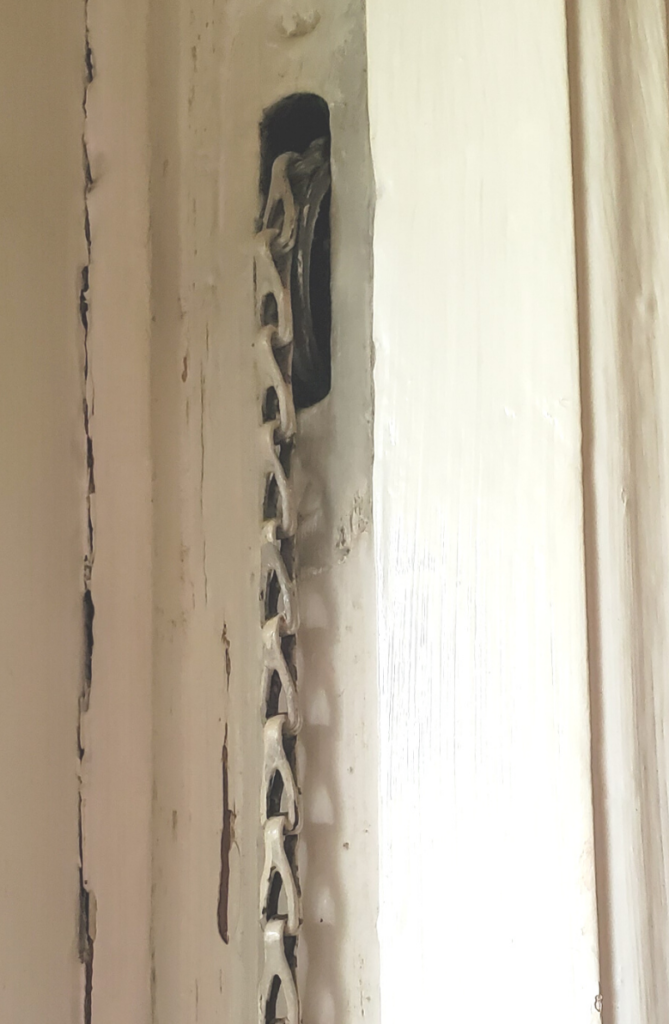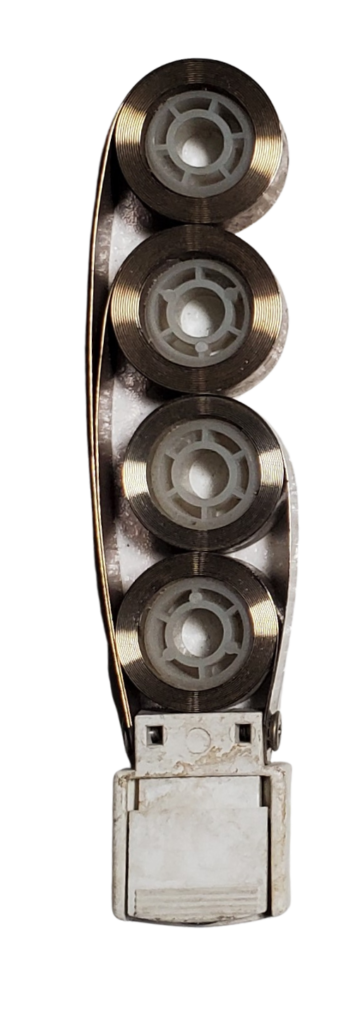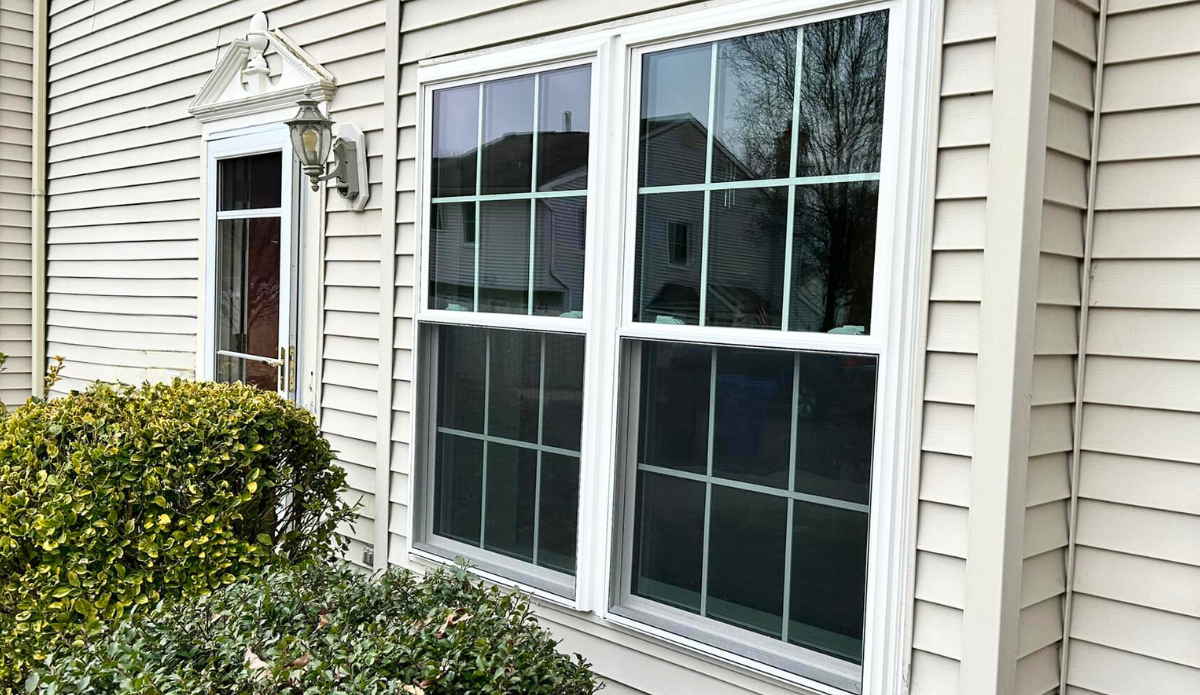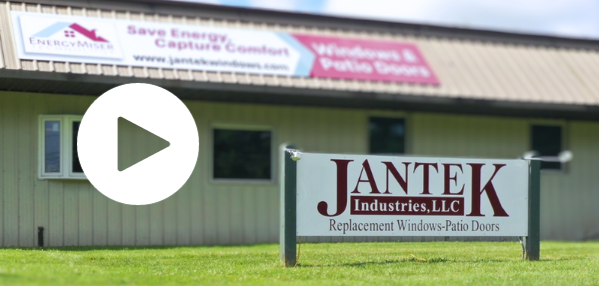The Evolution of Window Counterbalance Systems
Cord and Weights
 The simple answer is, physics. Window manufacturers figured out long ago that by engineering a counterbalance system into the design the window will stay open at the desired height. In windows, the counterbalance is a force that offsets the opposing gravitational force, or weight, of the open sash. Early designs used cords or chains, pulleys, and weights. The pully was attached to the non-operational upper part of the window frame. The cord was then threaded through the pulley and weights were attached to either end. When someone opened the window, the lead or iron weight lowers and acts to “counterbalance” the force of the window being raised.
The simple answer is, physics. Window manufacturers figured out long ago that by engineering a counterbalance system into the design the window will stay open at the desired height. In windows, the counterbalance is a force that offsets the opposing gravitational force, or weight, of the open sash. Early designs used cords or chains, pulleys, and weights. The pully was attached to the non-operational upper part of the window frame. The cord was then threaded through the pulley and weights were attached to either end. When someone opened the window, the lead or iron weight lowers and acts to “counterbalance” the force of the window being raised.
While this centuries old window counterbalance system is highly effective, it does come with some drawbacks. Its weakness is that the operational apparatus is hidden within the window’s frame. This becomes problematic when the cord breaks or the pulley becomes non-functioning. Repairing the balance could mean taking the frame apart to reveal the parts and reassembling it without damaging it. Additionally, because this system has become obsolete, getting parts for it can prove to be difficult.
 Spiral Balances
Spiral Balances
In later years, a spiral window balance was introduced. Sometimes referred to as a rod balance, this system relies on tension to offset the weight of the window. The spiral rod is adjusted by rotating it to get the tension, or torque, needed to securely hold the window in place. This simplistic designed took up less space than a cord and weight design, so it allowed for window companies to offer windows with a larger expanse of glass.
While the rods can become bent, this system is accessible for repairing, and even most do-it-yourselfers can handle replacing the part if needed. Furthermore, adjusting its force is simply a matter of rotating the spiral rod.
Block and Tackle
![]() This next system is somewhat of a combination of elements from the prior two. Also referred to as a channel window balance, block and tackle uses a spring as the counterweight.
This next system is somewhat of a combination of elements from the prior two. Also referred to as a channel window balance, block and tackle uses a spring as the counterweight.
This counterbalance system uses two pulleys, springs, and cords to supply the needed tension. When the sash is raised, the cord running through the pulleys (which is attached to the coil spring) stretches the spring. The downfall of this system is the multiple parts. Meaning, that there is a greater chance that one of them could fail.
 Constant Force
Constant Force
The constant force balance system is long lasting, smaller in size, and uses coiled springs to provide tension. Window part manufacturers use a chart to determine the coil needed. This is calculated using the window’s dimensions and weight variables, such as dimensions, glass, or any additional reinforcement.
This compact balance system works when the metal coils engage when the sash is moved. The metal uncoils when the window sash is lowered, then recoils when it is raised. This design is reliable and can be easily repaired or replaced if necessary.
So, how do you know if your window balance needs attention?
Simply put, the window stops operating properly. If your windows slams shut or won’t stay open, its most likely the balance. Only you can determine if your windows are worth the investment of your time and parts. Energy efficiency should also be considered. Older windows can allow your energy dollar to be wasted, so investing in new replacement windows could be the wiser choice.
If you have Jantek windows and feel your balance system needs attention, fill out our online Parts and Service Inquiry.
Free feel to call us call us at (609) 881-2400 with any questions you may have.
Need a quote? Our online TeleEstimate form allows you to get a hassle-free, same-day quote without a sales visit.



